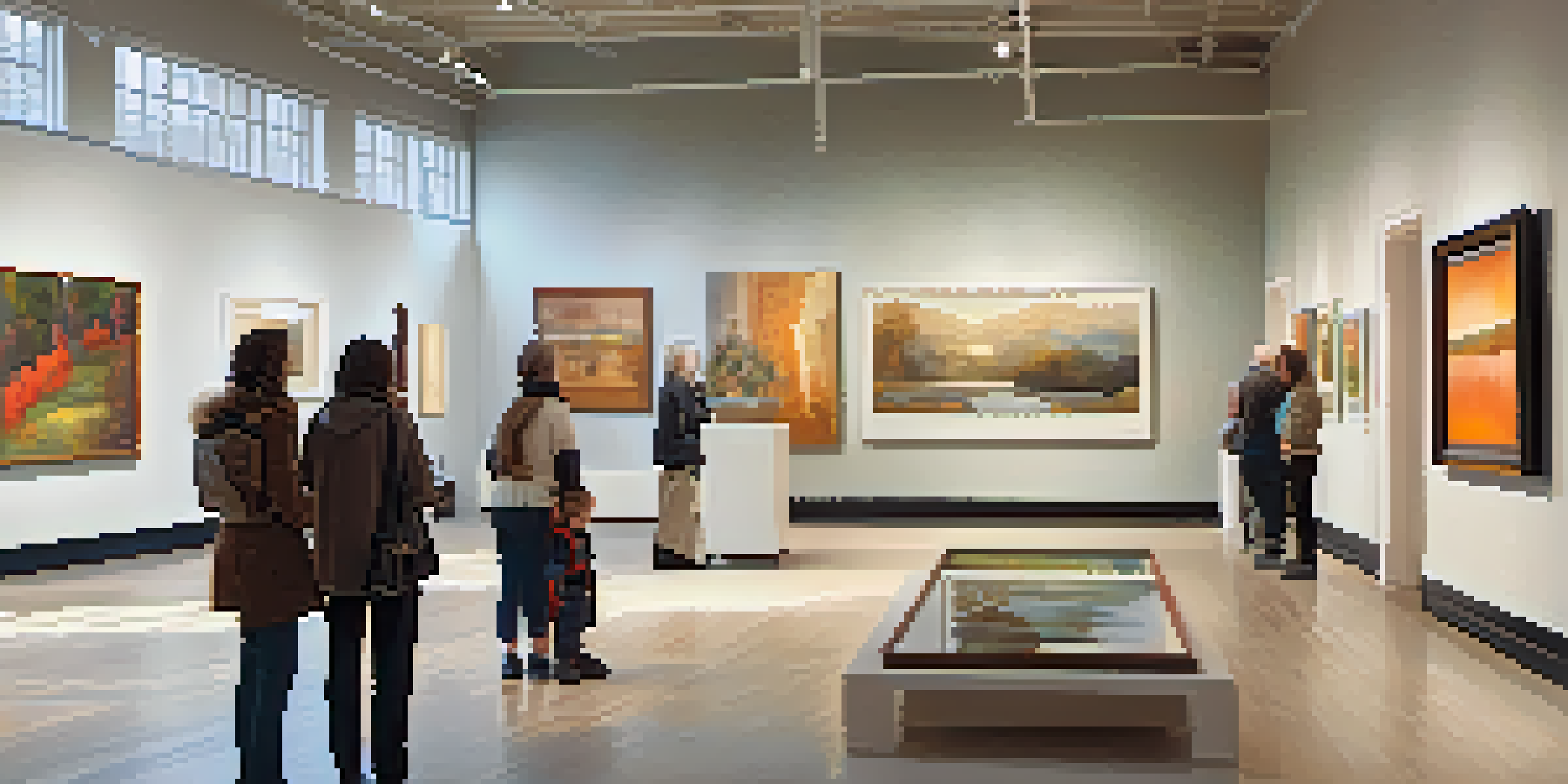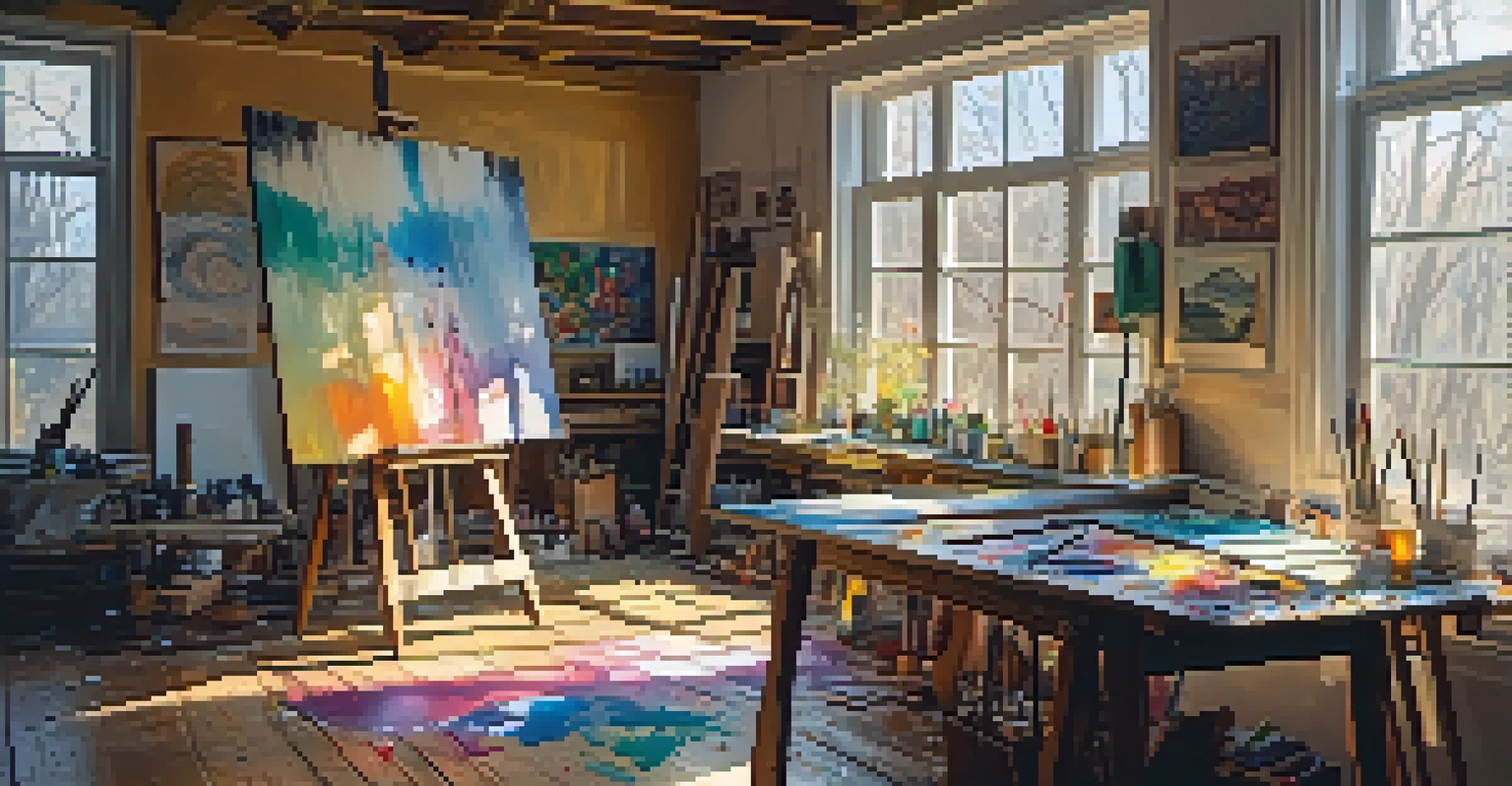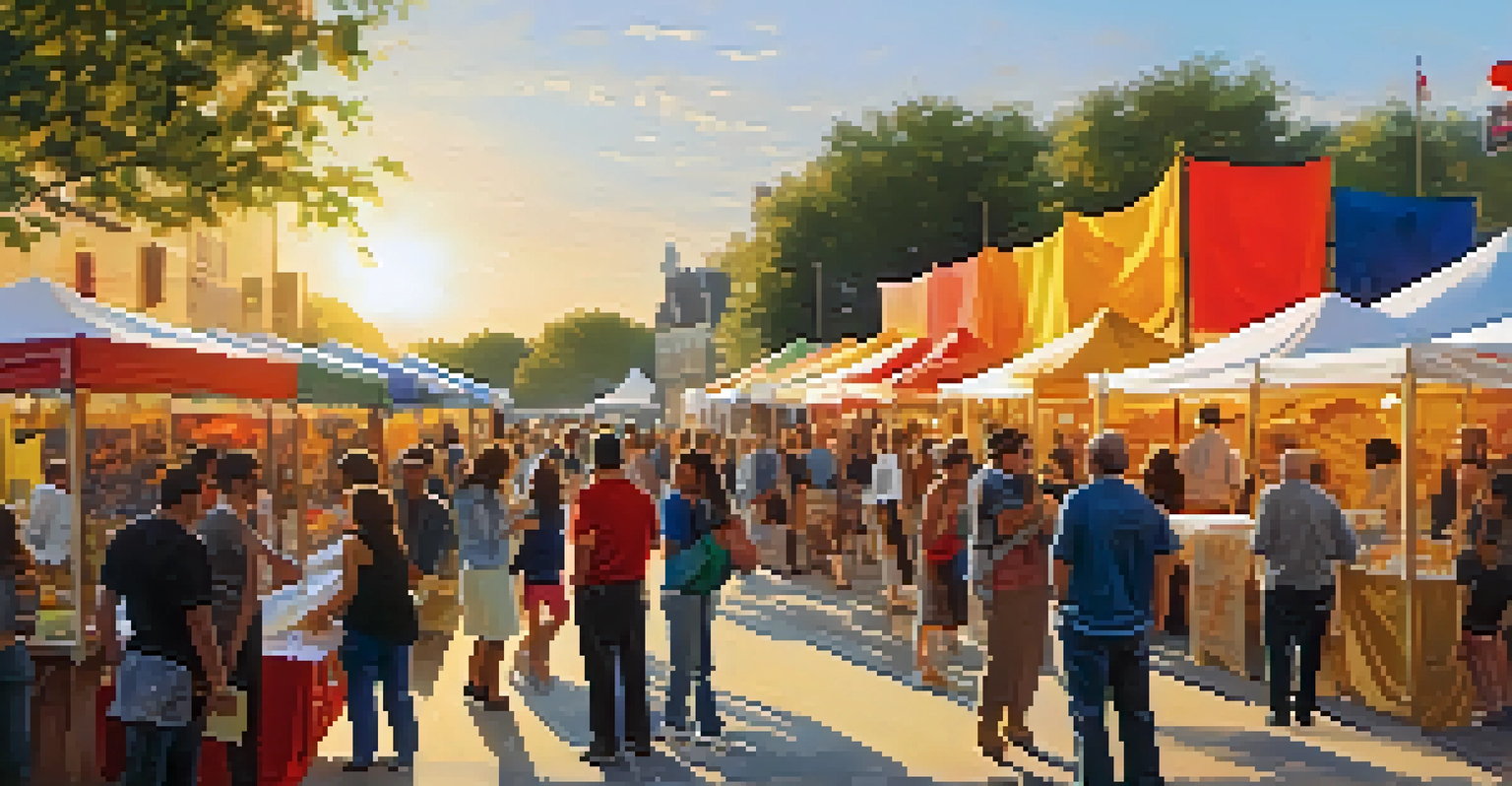Art as Investment: Navigating Risks and Rewards in Collectibles

Understanding Art as an Investment Vehicle
Art has long been viewed as a way to express personal taste, but it's increasingly gaining recognition as a viable investment. Many collectors see art not just as decoration but as an asset that can appreciate over time. Just like stocks or real estate, the value of artwork can fluctuate, making it essential to understand the art market dynamics.
Art is not what you see, but what you make others see.
Investing in art isn't just about purchasing a piece you love; it's about recognizing the potential for financial return. This means taking into account artists' reputations, market trends, and historical performance of specific art movements. For instance, contemporary art has seen significant growth in value over the last two decades, attracting both seasoned investors and newcomers.
However, the subjective nature of art can complicate its status as an investment. What one person sees as a masterpiece, another might view as mere decoration, making it crucial for investors to conduct thorough research and possibly consult with experts. This understanding helps navigate the art market's complexities while seeking lucrative opportunities.
The Risks of Investing in Art
While art can be a rewarding investment, it also comes with its fair share of risks. The art market can be volatile, and values can drop unexpectedly, especially during economic downturns. For example, works by emerging artists might initially skyrocket in price but could also plummet if their reputation falters or if the market oversaturates.

Additionally, the illiquidity of art poses a significant risk. Unlike stocks that can be easily bought or sold, finding a buyer for a piece of art can take time, sometimes years. This means that if you need to cash out quickly, you may find yourself waiting in a lengthy sales process, potentially at a loss.
Art as a Viable Investment
Art is increasingly recognized not just for its aesthetic value but also as an asset that can appreciate over time.
Furthermore, authenticity and provenance are critical in the art world. Purchasing a piece that later turns out to be a forgery can lead to significant financial losses. It's essential to ensure that any artwork you consider investing in comes with proper documentation to verify its authenticity and history.
Identifying Potential in Art Investments
Identifying promising art investments requires a keen eye and a bit of intuition. Look for trends in the art world, such as rising artists or movements that are gaining traction. For instance, street art has transitioned from subculture to high-value investments, demonstrating how shifts in public perception can create opportunities.
Invest in art, and you invest in culture. It's an emotional and financial asset that can appreciate over time.
Networking with art dealers, attending gallery openings, and participating in auctions can provide you with valuable insights into emerging trends and artists. Building relationships within the art community can also lead to access to exclusive pieces before they hit the mainstream market, giving you a competitive edge.
Additionally, diversifying your art collection can mitigate risks. Just as you wouldn’t put all your eggs in one basket with stocks, investing in different styles, mediums, and artists can help balance your portfolio. This strategy reduces the impact of any single piece underperforming in the market.
The Importance of Research and Due Diligence
Before making any art investment, conducting thorough research is paramount. Understanding an artist's background, past sales, and critical reception can provide valuable context for their work. Resources like auction house records and art market reports can serve as important tools in your research toolbox.
Due diligence goes beyond just knowing the artist; it also involves understanding the current market landscape. Keep an eye on auction results and gallery exhibitions to gauge how similar works are performing. This information can help you make informed decisions about when to buy or sell.
Understanding Investment Risks
Investing in art carries risks such as market volatility, illiquidity, and the importance of authenticity.
Moreover, consider seeking advice from art advisors who can offer expertise and insights. These professionals can help you navigate the complexities of the art market, ensuring that your investments align with your financial goals and risk tolerance.
Building a Diverse Art Collection
A diverse art collection not only brings visual interest to your space but also spreads risk across various pieces. Investing in a mix of established and emerging artists can create a balanced portfolio that stands a better chance of appreciating over time. This approach allows you to enjoy the artwork while keeping an eye on its potential financial growth.
Consider incorporating different mediums, such as paintings, sculptures, and photography, into your collection. Each medium has its own market dynamics, which can act as a buffer against downturns in specific sectors. For instance, while contemporary paintings may face fluctuations, photography or digital art might perform differently based on trends.
Additionally, attending art fairs and exhibitions can expose you to a wide range of styles and artists. Engaging with different aspects of the art world can inspire you and help refine your taste, making it easier to identify pieces that resonate with both your aesthetic preferences and investment goals.
The Role of Art Advisors in Investment Decisions
Art advisors play a crucial role in guiding collectors through the complexities of art investment. These professionals bring a wealth of knowledge and experience, helping clients navigate the art market with confidence. Whether you're a novice or a seasoned collector, an art advisor can provide valuable insights tailored to your specific goals.
One of the significant advantages of working with an art advisor is access to exclusive opportunities. They often have connections within the art community, leading to early access to emerging artists or sought-after pieces. This can be especially beneficial in a competitive market where timing can significantly impact investment outcomes.
Research is Essential for Success
Thorough research and due diligence are crucial for making informed art investment decisions.
Moreover, art advisors can assist in the negotiation process, ensuring you get the best deal possible. They understand the nuances of pricing and can help you avoid common pitfalls, ultimately making your art investment journey smoother and more successful.
The Future of Art Investment: Trends to Watch
As the art market continues to evolve, several trends are shaping the future of art investment. One notable shift is the growing acceptance of digital art and NFTs (non-fungible tokens), which have gained momentum in recent years. This new frontier presents exciting opportunities for investors willing to explore digital assets alongside traditional art forms.
Environmental considerations are also influencing art investments, with a rising focus on sustainable practices. Many collectors are now seeking works by artists who prioritize eco-friendly materials and themes, aligning their investments with personal values. This shift not only reflects societal changes but also opens up new avenues for investment.

Lastly, the globalization of the art market means that investors have access to a broader range of artworks and artists from around the world. This diversification can lead to exciting investment opportunities, as emerging markets gain recognition and established artists break into new territories. Staying informed about these trends will be key to navigating the future of art as an investment.